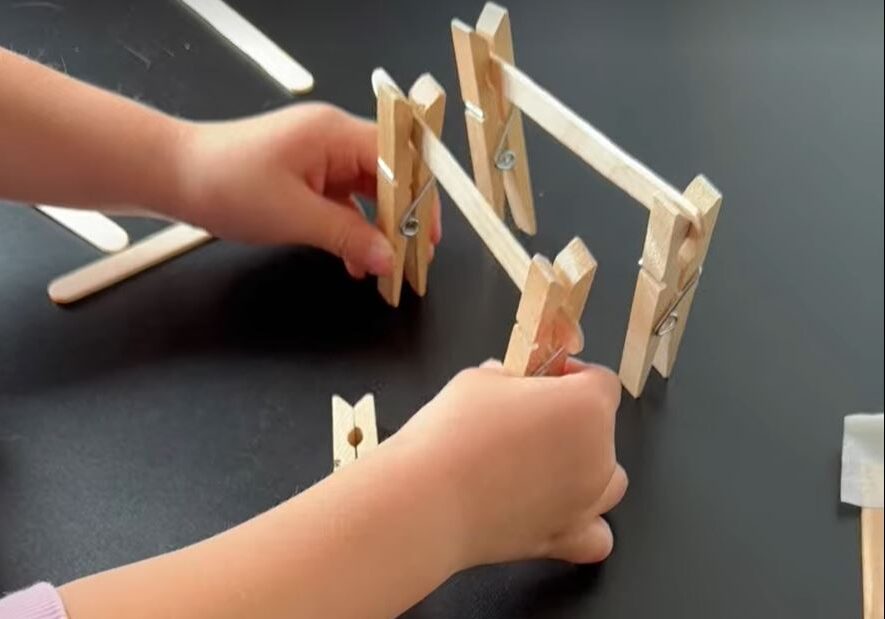Imagine your child not just playing with toys but creating them from scratch. Picture them using a magnifying glass to study tiny details, a calculator to make everything fits perfectly, and a blueprint to design their unique creation. This isn’t just playtime—it’s the essence of STEM education. STEM isn’t about memorizing facts; it’s about encouraging creativity, exploration, and problem-solving that empowers kids to shape the world around them.
But what exactly is STEM, and why is it so crucial for your child’s future?
What is STEM? Why It’s More Than Just Science and Math
STEM stands for science, technology, engineering, and math. It’s not just a combination of subjects but a powerful approach to learning that integrates these disciplines to solve real-world problems. STEM education teaches kids to be curious, ask questions, and develop solutions to the challenges they observe in their everyday lives. Plus, integrating STEM into your child’s routine can be a game-changer. It fosters critical thinking, creativity, and resilience—invaluable skills in today’s rapidly changing world.
The Power of Problem-Solving: Why STEM Fuels Innovation
Think about the smartphone in your pocket. It didn’t appear out of thin air. Scientists researched, engineers designed, and mathematicians calculated to bring this everyday tool to life. This process exemplifies STEM in action—bringing together various disciplines to create something new and impactful.
Kids learn to approach problems from different angles by engaging in STEM activities. They become inventors in their own right, whether they’re designing a bridge from popsicle sticks or programming a basic video game. These problem-solving skills extend beyond the classroom, preparing them for real-world challenges.
Practical Tip: Start with projects that align with your child’s interests. Whether it’s building a model rocket, experimenting with kitchen science, or coding a game, hands-on experiences are the foundation of effective STEM learning.
The Importance of Integration in STEM Education
In many schools, subjects like math and science are taught separately. However, real-world challenges don’t come compartmentalized. Creating an app, for example, requires knowledge of technology, math, engineering, and science. This integrated approach is what makes STEM education so effective.
STEM education breaks down traditional silos, encouraging kids to see connections between different subjects. For instance, when designing a simple machine, kids aren’t just applying physics—they’re also using math to calculate forces, engineering principles to construct it, and technology to improve its function. This holistic learning approach mirrors real-life problem-solving and equips kids with the ability to think critically and creatively.
Practical Tip: Look for projects that combine various STEM fields. Building a robot, for instance, involves technology (programming), engineering (construction), and math (calculating movements), providing a comprehensive learning experience.
The Future of STEM: Shaping a Better World for Our Kids
The future isn’t a far-off dream; it’s something our kids will create. With STEM skills, today’s students are the architects of tomorrow. From developing renewable energy solutions to exploring the farthest reaches of space, the potential is limitless.
Diversity is key to unlocking this potential. Different perspectives lead to innovative solutions, making it crucial to encourage all children—regardless of gender, race, or background—to explore STEM. When kids see role models who look like them succeeding in STEM fields, they’re more likely to pursue these paths themselves.
Practical Tip: Support and encourage inclusivity in STEM by participating in or supporting programs like Girls Who Code or Black Girls Code. Representation matters, and when kids see themselves reflected in these fields, it fuels their ambition and confidence.
Empower Your Child with the Power of STEM
STEM education is more than just a curriculum—it’s a pathway to unlocking your child’s potential. It nurtures curiosity, critical thinking, and creativity, equipping them with the skills to tackle any challenge. As we look to the future, STEM will play a pivotal role in shaping the innovators, problem-solvers, and leaders of tomorrow.
So, let’s encourage our children to explore, experiment, and ask questions. The future belongs to those who dare to dream big and harness the power of STEM.
Ready to start your preschooler’s STEM journey? Explore the FREE Preschool STEM Activities group on Facebook!


